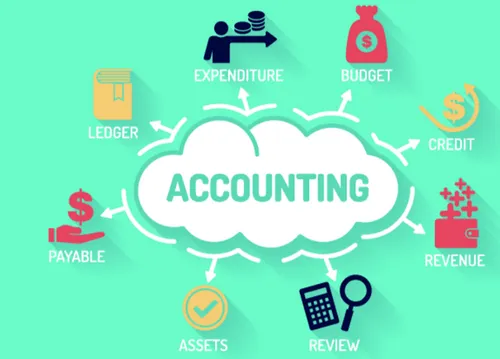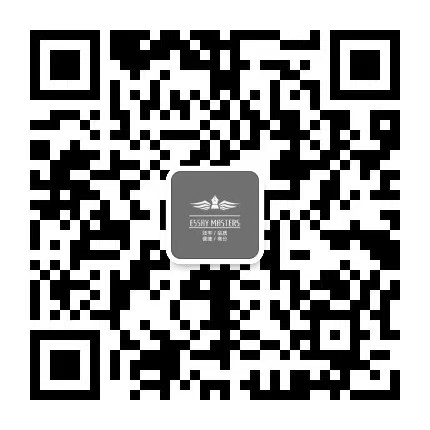
Workers engagement
(1)Statement D1: “Workers need to be aware of punishments and penalties if they do not follow safety instructions – this will improve their active engagement and decrease the number of accidents at their workplace.”
In New Zealand there are various types of laws and regulations are available for workers and companies as well, who do not follow health and safety practices but these laws never get proper attention by workers as they are not aware of the punishment of breaching the law. If exact knowledge is provided by companies, PCBU’s or government to employees regarding penalty of misbehaving or breaking safety rules then will never be bold enough to breach the law attentionally, and not put lives of their and co-workers in danger. The new Health and Safety at Work Act were introduced on 4 April 2016. It presents a patched-up structure for managing wellbeing and security in connection to wherever work is being done – regardless of whether you are a worker, contractual worker, independently employed individual or guest to a working environment. Under the new Act, the dimension of punishments is isolated between those who are individual and those that other people who are not regular people (for example organizations or trusts). The highest punishment for taking part in the foolhardy lead that opens others to danger of death, genuine damage or sickness is 5 years’ detainment and a $600,000 fine for an individual, while organizations will be at risk for a fine of up to $3 million (Donovan, 2016). Companies should hold seminars, safety programs to create awareness among workers to make the workplace safer and healthier for everyone who works there. By this, workers not only get knowledge about laws but feel more engaged and responsible for their acts which leads towards a better workplace. Moreover, it is need of time to tell workers that health and safety are neither boring nor it is just a formality but it is a lifestyle for making a safer workplace. It is usually seen that when a person in workplace or company not follow health and safety policy and procedures, and company leave him without giving punishment because they think one person not makes a big difference but later on other also starts following the same behaviour because they think if it is okay with one person then they can also do the same thing. That is why misbehaving of the employee towards health and safety should be deal strictly at first glance without any delay to maintain the decorum of the workplace. If companies to do so, then this will set an example for others and others will think twice before doing any wrong thing. Also, employers should think about the health and safety videos and documents by which employee go through before getting hired, which should be more interesting for the engagement of worker.
Overall, it can be seen that it is very important for awareness among workers towards punishment and penalties if they do not follow safety law.
(2) Statement D2: The HSWA 2015 states that every New Zealand organisation needs to have a health and safety representative who makes sure there is an effective system of worker engagement and participation in place.”
Everybody shares obligation regarding working environment wellbeing and security. It can be seen that when organizations and labourer impart and co-work on wellbeing and security matters, their working environment ends up both more beneficial what’s more, more secure. The Health and Safety at Work Act 2015 says that employer must engage their employees in health and safety related issues and decisions which will improve their active involvement in the workplace. Worker’s involvement is a two-way process which can be can be enhanced by
- conversing with each other
- tuning in to each other’s worries
- raising concerns and tackling issues together
- looking for and sharing perspectives and data
- talking about issues in a great time
- thinking about what everybody needs to state
All workers should have equal chances to speak on health and safety issues and give suggestions on any concern. For this thing there are Health
and Safety Representatives (HSRs), Health and Safety Committees
(HSCs) and Unions are available who rise their health and security issues in front of PCBU (Worksafe, 2017). A Health and Safety Representative is a worker who has been chosen by the individuals from their workgroup to speak to them in wellbeing and security matters. Any business can have HSRs and they are a settled method to help specialist commitment and support. The HSR’s plays a huge role in participation and engagement of worker’s health and safety in the workplace.
- An HSR can issue a Provisional Improvement Notice (PIN) if they believe that a person is opposing Health and safety act 2015.
- HSR’s can invest in the workplace at any time by giving notice unless a serious or accident occurred in the workplace.
- speak with workers on wellbeing and security matters
- An HSR supports worker when there is any serious danger which increases workers engagement in health and safety issues.
- HSR not only represents the worker in case of injuries but also in interviews between worker and PCBU with the involvement of workers, complaints against worker, get information regarding health and safety issues from PCBU, that increases participation of worker ineffective system at workplace.
- assemble positive wellbeing and security rehearses at work and encourage great associations with their business
- Identify and supervise risks and talk about approaches to oversee them with PCBU
- counsel with reviewers on wellbeing and security issues
- advance the interests of specialists in a wellbeing and security setting, especially specialists who’ve been hurt at work. HSRs can likewise mastermind restoration and come back to work.
- make wellbeing and security proposals
- give input to the business about whether wellbeing and security prerequisites are being followed.
So, it is a totally clear fact that HSR plays a vital role in the participation and representation of workers in the workplace. That is why every New Zealand organisation must have an HSR for wellbeing and participation of workers in the workplace.
(3)“WorkSafe expects a PCBU to have deliberate, planned ways to engage with workers and support their participation. Those can be formal and informal. Workers’ role is to follow provided job instructions accurately and never question their safety impacts.”
According to Health and safety at work act 2015, a Person conducting or undertaking business must have considered a plan to increase workers participation and engagement. It is a great idea to have formal approaches to contribute notwithstanding the casual ways that numerous organizations offer. There are various ways you can complete labourer commitment and support, a few thoughts are:
- Health and safety representatives are people who represent workers safety and security issues in front of PCBU and ensure that there are proper participation and engagement of employees in the workplace.
- Health and safety committees unite Representatives and, in the advancement, and audit of wellbeing and security arrangements and methods for the working environment. HSCs make sure a business and its labourer delegates to meet normally and work agreeably to improve workplace wellbeing and security (Worksafe, 2016).
- Pre-shift meetings provide a chance for workers to provide feedback about security and safety actions and get a chance to put their ideas in front of PCBU for the betterment of the workplace.
- Suggestion box can be helpful for the suggestion about the action plan for further improvements in the workplace.
- PCBU can give rewards and prize to those people who play a good role in a safe environment, which will prove an inspiration for others.
- Keep employees notified of the results of the mishaps they observed: individuals are likely to participate in workplace safety if they see you value it and meet suggestions and developments via.
- Provide health and welfare as a standard point of call during training sessions: this brings workers a regular opportunity to communicate their opinions and conclusions and give them the freedom to share valuable feedback.
It is worker’s responsibility to follow rules and regulations that are implemented by PCBU to improve workplace’s safety and security but it is not fair if they do not have right to ask a question about their safety impacts. They must have the right to raise questions about safety impacts and refuse to follow any guidelines that seem to unsafe or insecure to them. Every individual has a different point of view towards safety and their interactions will really beneficial for the workplace. If they do not ask questions then authorities will not get an idea about what’s going wrong in the workplace and what factors are responsible for safety practices. It is a well-known fact that solution comes from where the root of the problem lies, that is why it is very important for the whole workplace to raise questions and report about unsafe work practices and their bad impacts on the welfare of employees. I agree that PCBU to have scheduled, systematic paths of indulging with staff and supporting their involvement, but I do not agree that workers never question about their effect on wellbeing (Sitesafe, n.d.).
(4) “Safety coaching is an effective method of how to change worker’s behaviour and attitude and it can be used even when the person is completely new to the specific workplace.”
Safety coaching is a useful way to change worker’s behaviour at the workplace even worker is entirely new to that place. Safety coaching is not just a training but a holistic approach to make the employee aware of the importance of health and safety. Also, safety coaching is not just making policies, procedures and disciplines but it is motivation, inspiration and encouragement for safer actions. It gives an opportunity to the worker to share their thoughts and views with others which leads towards a successful workplace. There are some positive effects of coaching on the worker:
- Coaching helps to accept any changes and adapt himself according to the situation instead of criticising others and feel feared by changes.
- It motivates employees by giving examples of best workplaces. Motivation is the only thing which works even when anything else is going wrong.
- It makes the employee responsible for the health and safety of the workplace and the acts which affect the workplace so that worker do everything accordingly.
- Coaching is not that only works for employees but the employer as well. It shows how being a decent employer can be won trust and employee feel friendly with them instead of feel feared.
- It provokes creativity and innovation of employees and teaches them how they can make better usage of their key skills and knowledge.
- It teaches how a worker can make better use of time by its management and do those work first which are of higher priority and other ones later.
- It teaches that how proper precautions from hazards is important while maintaining the production and efficiency level.

There are different types of coaching which can be used by organisations to give coaching to their workers. GROW is a model for a coaching session which demonstrates that by asking questions rather than giving instruction is a better path of coaching and it makes changes more actively. GROW stands for Goal, Reality, Options and Will.
- Goal: There should be a goal decided which will aim of coaching session so that the session can be more fruitful for the organisation.
- Reality: It means coaching session should be grounded in reality only possible things will be considered.
- Options: This stage will provide options to employees for improvement and with the help of coach they decide final options.
- Will: The last part is that the person who is coached will show the willpower of commit the steps which decided in session (Barton, n.d., p. 17).
Safety coaching is a really essential part of the workplace for the welfare of workers. This method can be used by organisations to provide safety coaching sessions to their employees even they are new to the workplace. Coaching will give a new direction to the way of working and their thinking about health and safety. This will not only change their behaviour and attitude but the whole mindset and workers will adopt healthy and lifestyle.
References
Donovan, M. (2016, March 15). All the penalties in the new health and safety act. Retrieved May 24, 2019, from http://www.markdonovan.co.nz/penalties-new-health-safety-act/
Worksafe. (2017, September 21). HSR functions and powers. Retrieved May 27, 2019, from https://worksafe.govt.nz/managing-health-and-safety/health-and-safety-representatives/hsr-functions-and-powers/
Worksafe. (2016, August). Worker participation & health & safety representatives. Retrieved May 27, 2019, from https://safetycharter.org.nz/wp-content/uploads/2016/08/Safety_Charter-Workers_Participation_Health_Safety_Representatives.pdf
Sitesafe. (n.d.). Worker engagement. Retrieved May 28, 2019, from https://www.sitesafe.org.nz/guides–resources/practical-safety-advice/worker-engagement/
Barton, M. (n.d.). Coaching for active participation. Retrieved June 7, 2019, from https://moodle.ara.ac.nz/mod/folder/view.php?id=479726
H&S FOR VULNERABLE GROUPS
(1) Vulnerability is the dimension to which a crowded, individual or establishment cannot anticipate, deal, oppose, and regain from disaster effects (WHO, 2012). There are various employees of vulnerable groups works at the workplace which may include, older workers, pregnant workers, young workers, workers with physical disabilities, workers with language disabilities or for whom English is not the first language. Young workers may be more at risk of accident or injury due to their inexperience or lack of training (Worksafe, 2017). Here Young workers are the most vulnerable group at work as they are less experienced than others and not fully trained which makes them more likely for an injury or accident. There is various risk connected to a young person at the workplace, listed below:
- Unexperienced: Young workers are more vulnerable and at high risk than older workers because they are totally inexperienced and new to the workplace. Instead of getting help or asking someone they try to do the thing in their own way. They are not aware of the technique and procedure of work, due to which they often get injured and resulted in serious injuries many times.
- Lack of judgement: As young employees have lack of experience, so they have shortness of judgement. They mostly miscalculate or mispredict the results of the act. They failed to think accurately that can cause injuries to them or their mates at work.
- Poor training: Training is also an essential part of any newcomer in the workplace. If poorly trained people come to work, then they not only dangerous for themselves but also for the whole team. When youngsters not properly concentrate on their training part or their trainer just tell them like a formality because they think it is a boring thing, then it’s the outcome is really disastrous. Poorly trained worker rarely follows health and safety guidelines which put them at high risk.
- over-enthusiasm: It is rightly said that young blood is always over-enthusiastic and overconfident. But is important that with enthusiasm, consciousness and mindfulness at work is equally important. Over-enthusiastic workers ignore risk factors, which resulted in injuries and accidents at the workplace.
- Exposure to harmful substance: Young employees mostly unaware of harmful substances like toxic substances which cause health illness, get burnt or harmful radiation. These things cause skin infection or other serious diseases.
- Lack of risk awareness: This is the most harmful risk connected to that group, as they have very less knowledge of risk and their impact. The young worker never thinks too much about the final results of their work. They do not have the idea that their little mistake can cause someone’s death.
(2) Employers can take some essential steps to reduce risk factors for young workers. As it can see from the last discussion that lack of experience and training are main factors which put young employees on risk. Prevention is always better than cure So, companies can provide proper training sessions to improve their workability and they become more familiar with the workplace and get the key thing to escape to dangerous risks. There is a PDCA cycle which can be followed by the organisation for improvement in the workplace that also implemented by many companies in their workplace. The cycle Plan – Do – Check – Act is a four-step change design. Just like a ring has no final stage, for operational excellence, the PDCA cycle should be repeated again and again (ASQ, n.d.).
- Plan- Companies can make a plan for potential hazards and risk associated with those hazards while accessing risks they should engage workers with them. They should make a plan against those risks which can cause permanent injury or illness. In the case of vulnerable group inexperience, poor training or lack of judgement are major risks which should be eliminated first of all.
- Do- Once all risks are accessed then think whether all risks can completely eliminate from the workplace or need to minimise it. For they can discuss by all control measures which can be taken account to get rid of risks. Expensive measures or paperwork are not always the best option. Employers can assist young employees to work under the supervision of experienced and older workers and discus for matters about which they have doubt whether they are doing in the right way or not. Secondly, employers should not compromise with their training. The best trainer should be provided for better results and not allow to untrained employees to work in their companies.
- Check- Health and safety is not an activity but it is a continuous process of improvement. Higher authorities should meet with young workers and get their feedback by which further improvement can be possible. Regular inspection, observations and discussion are helpful to mitigate risks of injuries and accident-related with vulnerable groups. Also, health surveillance records of workers should be kept by which hazards of injuries can easily be identified and better steps can be taken so that any mishappening will never occur in future.
- Act- Act means a review of the activities of workers. Employers can review of young worker’s activities and this will help them to access and control risks. By this, they suggest a better way of doing any work for the youngsters.
By using this method employers not only eliminate to risk but works for future improvement as well. This is the best method. for employers to deal with risks as this a proper method from making a plan to continue implementing it for eradication it completely.
(3) Health and safety are the responsibility of everyone at the workplace but as an individual, there are some specific responsibilities which should be taken into account at this point. Every person is accountable for the welfare of not only him but for his team and colleagues as well. Their action, way of work and thinking will affect the whole workplace either he is doing well or doing something wrong. There are some key responsibilities of a person at a workplace:
- Take care of the health of own and colleagues as well. Do not do any sort of work which has an adverse effect on health.
- Wear proper personal protective equipment to escape from any kind of injury or mishappening.
- If there is any hazard which can result in an accident, then report it to managers or high authorities so that possible measures can be taken to remove it.
- Follow all health and safety instructions, policies and procedures that organisation provide you to do safe work.
- The main thing which affects welfare is training, it is a person’s accountability to get properly trained and clear all queries and questions which will affect them in future.
- The worker should work in a safe manner. Some kind of entrainment will result in an accident like pranks, jokes or comments.
These are some responsibilities of the individual at the workplace. There are many ways to increase awareness about these issues, from those here I would mention some important ones:
- Workplace inspection: The utmost important step for workplace’s safety is a regular inspection. By this, they will get the idea of hazards which can cause harmful injury and should be taking action as soon as possible. Also, workers involvement will more helpful, they will tell about any broken machinery or things that should be replaced. First aid kit and hazard can be provided for the betterment of workers (Business Matters, 2018, para.1).
- Training: Training is one of the best ways to reduce the chances of injury and hazards. Proper training should be provided to every person in the workplace either he is working on site or in office because of various type of hazards associated with different kind of works. These days training sessions seem boring which reduces the involvement of trainee so e-learning is a good option which makes training better than classrooms and increases the involvement of employees. A feedback form or option should be given to employees which helps to find the pros and cons of training and helpful for future sessions (Business Matters, 2018, para. 2).
- Records: Training, inspection and other things are good to improve health and safety, but records of hazards and accident will help them to concern on the problematic area where they can make changes to improve safety standards (Business Matters, 2018, para. 4).
- Communication: The level of health and safety highly dependent on communication between workers and employers. If there an effective way to communication then the rate of accidents is rapidly decreased. That is why employers should talk with workers on a regular basis about issues and be decent with workers so that they share their views without any hesitation and fear. Suggestion boards will help in communication (Business Matters, 2018, para. 3).
(4)
(A) https://www.youtube.com/watch?v=Fr_dI8yON2U
This video is made for an example of training or induction for beginners in their careers or young workers. This video demonstrates the rights and duties of a worker at work. Now I am going to elaborate facts I get from this video.
- A worker have right to know about any sort of information that he required to work safely, he has right to participate in any health and safety programme organised by their organisation and right to refuse to do that work likely to injure him or hurt him.
- The worker needs to tell about any injury to their supervisor right away and fill the injury form or call work safe if they have doubt or questions about it.
- Do not put up with any violence and report the violence or abusive behaviour to the supervisor.
- Workers should make sure that they got proper training and they should ask questions to the boss about the explanation of any health and safety rules.
- Do not take any shortcut even others are doing so.
- Use personal protective equipment at the workplace.
- Report anything you are not feeling safe about.
This video shows about right, responsibility and participation of a worker in making health and safety of the workplace.
(B) https://youtu.be/k3qThpZYlTA
This video shows the contribution of young worker’s in Queensland workforce and the rate of injuries in young workers. Also, it demonstrates that young worker does not notice risks, misjudges the level of risk, less likely to ask questions and mould behaviour according to others whether it is right or wrong. Effective induction and training, regular supervision and feedback, support and monitoring are enough for the trainee to adopt the right attitude towards safe workplace. It shows how the interaction of worker and trainer is important at the workplace. There is an example of two young workers Adam and Ryan. Adam is civil construction trainee and Ray is his boss who promotes young worker as he thinks better training to young trainee will give more productivity and he follows tell me, show me and watch me approach. He shows his trainee first how to do and said him to watch carefully, later insist him to do. Also, there is good communication, more interaction and proper supervision available between Adam and Ray. In the second scenario, Ryan is a 21-year-old tiler apprenticeship and Dan is his boss who thinks the young worker is a hassle, slow and always stick with the phone. There is a lack of interaction between trainer and supervisor which results from Ryan not follow health and safety instruction. Also, he not able to ask queries because of less communication.
This video shows how both cases are totally different from each other and how behaviour, communication, interaction and supervision of supervisor and trainer effects the final outcomes.
References
- World Health Organisation. (2012, August 24). Vulnerable groups. Retrieved May 29, 2019, from https://www.who.int/environmental_health_emergencies/vulnerable_groups/en/
- ASQ. (n.d.). What is the Plan-Do-Check-Act (PDCA) Cycle? Retrieved May 30, 2019, from https://asq.org/quality-resources/pdca-cycle
- Worksafe. (2017, September 07). How to manage work risks. Retrieved May 30, 2019, from https://worksafe.govt.nz/managing-health-and-safety/managing-risks/how-to-manage-work-risks/
- Business Matters. (2018, November 02). How to raise the health & safety awareness of your employees. Retrieved June 5, 2019, from https://www.bmmagazine.co.uk/business/how-to-raise-the-health-safety-awareness-of-your-employees/








